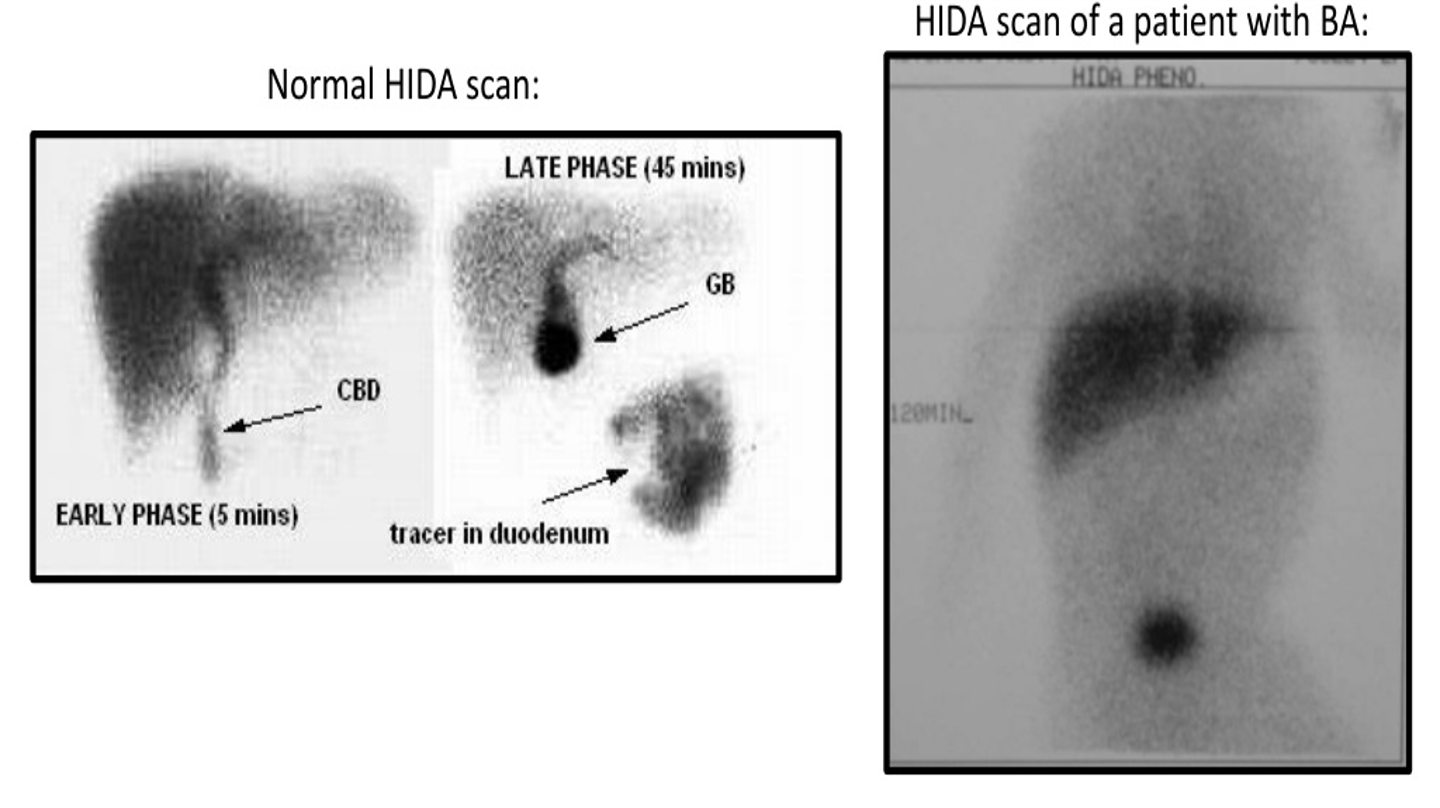Biliary atresia is the commonest cause of neonatal liver disease and indication for liver transplantation in children. Biliary atresia, also known as extrahepatic ductopenia and progressive obliterative cholangiopathy, is a childhood disease of the liver in which one or more bile ducts are abnormally narrow, blocked, or absent.
CLINICAL PRESENTATION
- Mild jaundice and pale stools (the color may fluctuate but becomes increasingly pale as the disease progresses).
- They have normal birthweight followed by faltering growth.
- Hepatomegaly is often present initially.
- Splenomegaly develops due to portal hypertension.

INVESTIGATIONS Blood tests may include:
- Raised conjugated bilirubin.
- Abnormal liver function test.
- Coagulation tests.
- Viral tests – some viruses can cause liver damage.
- Tests for some metabolic diseases (such as enzyme deficiencies) that can cause early jaundice and liver test abnormalities.
- Tests for cystic fibrosis, such as a sweat test.
IMAGING
- A fasting abdominal ultrasound may demonstrate a contracted or absent gallbladder, though it may be normal.
- Biliary excretion or “HIDA” scan.
- The diagnosis is confirmed by a cholangiogram (ERCP (endoscopic retrograde cholangiopancreatography), or operative.
- Percutaneous liver biopsy is valuable procedure in the evaluation.
Hepatobiliary scintigraphy (HIDA Scan)

Treatment
- Palliative surgery with a Kasai hepatoportoenterostomy (a loop of jejunum is anastomosed to the cut surface of the porta hepatis) bypasses the fibrotic ducts and facilitates drainage of bile from any remaining patent ductules.
- Early surgery increases the success rate, with 80% clearing the jaundice if performed before 60 days.
- Even with successful clearance of jaundice, the disease progresses in most children who may develop cholangitis and cirrhosis with portal hypertension.
- Nutrition and fat-soluble vitamin supplementation is essential.
- If the Kasai is unsuccessful, liver transplantation is considered. Biliary atresia is the single most common indication for liver transplantation in the pediatric age group.
